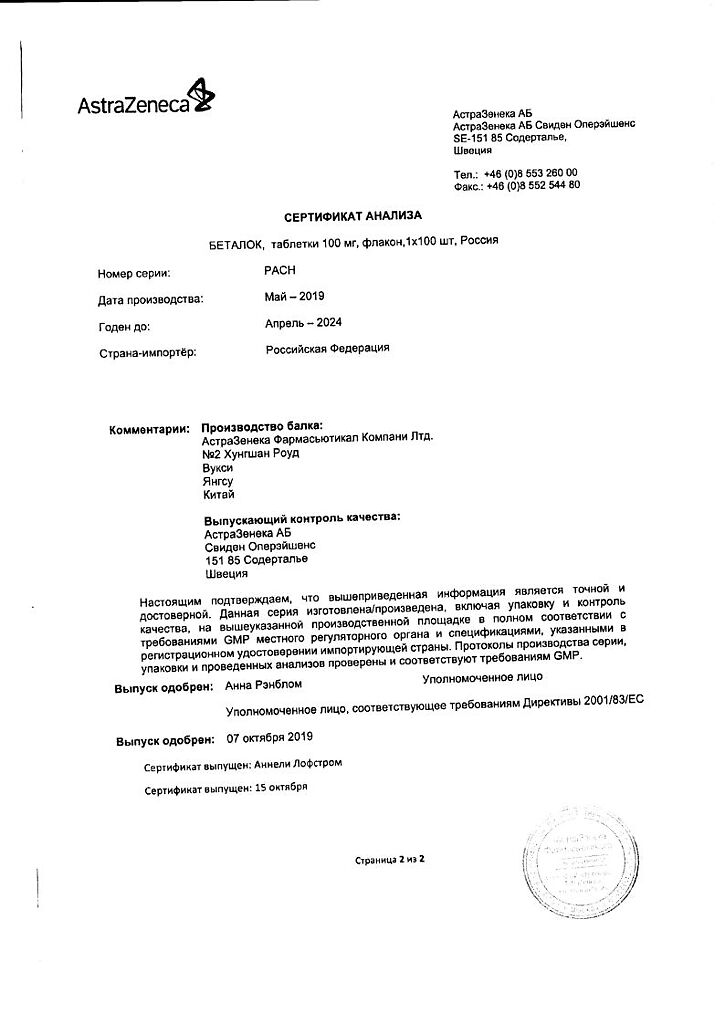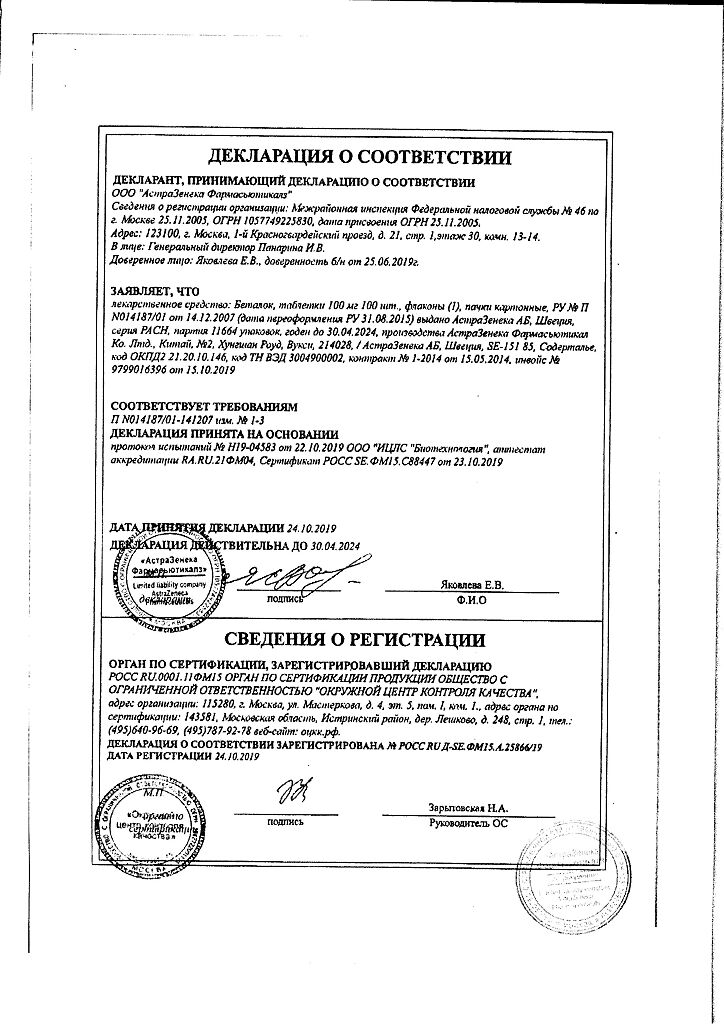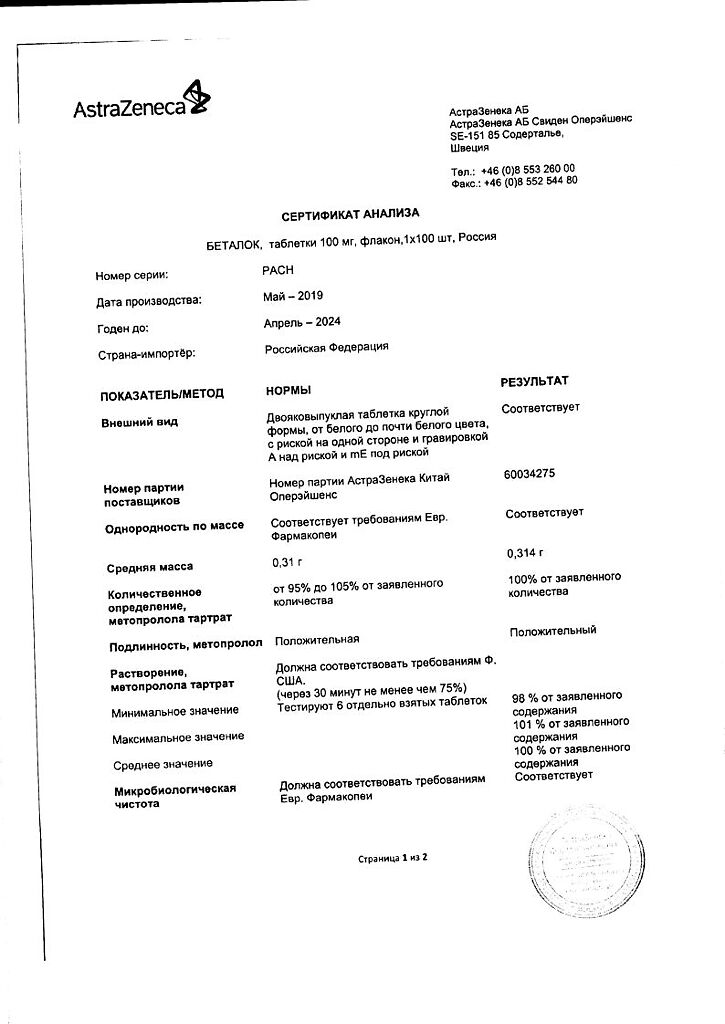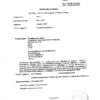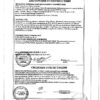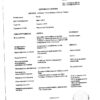No products in the cart.
Betaloc, tablets 100 mg 100 pcs
€1.00
Out of stock
(E-mail when Stock is available)
Description
Metoprolol is a β1-adrenoblocker that blocks β1-receptors at doses significantly lower than those required to block β2-receptors. Metoprolol has little membrane-stabilizing effect and no partial agonist activity. Metoprololol reduces or inhibits the agonist effect that catecholamines released during nervous and physical stress have on cardiac activity. This means that metoprolol has the ability to inhibit the increase in HR, minute volume, and increased cardiac contractility and BP caused by the sudden release of catecholamines.
Patients with symptoms of obstructive pulmonary disease may be prescribed metoprolol in combination with β2-adrenomimetics if necessary. When used together with β2-adrenomimetics, Betaloc® in therapeutic doses has less effect on the bronchodilation induced by β2-adrenomimetics than nonselective β-adrenoblockers. Metoprolol affects insulin production and carbohydrate metabolism to a lesser extent than non-selective β-adrenoblockers. The effect of Betaloc® on cardiovascular response in hypoglycemia is significantly less than that of non-selective p-adrenoblockers.
Clinical studies have shown that Betaloc® may cause a slight increase in triglyceride levels and a decrease in free fatty acids in the blood. In some cases, there was a slight decrease in the high-density lipoprotein fraction (HDL), which was less pronounced than with non-selective P-adrenoblockers. However, one clinical trial demonstrated a significant decrease in serum total cholesterol levels when treated with metoprolol for several years.
The quality of life during treatment with Betaloc® does not worsen or improve. Improved quality of life with treatment with Betaloc® has been observed in patients after myocardial infarction.
Indications
Indications
Arterial hypertension: lowers blood pressure and reduces the risk of cardiovascular and coronary death (including sudden death).
Angina pectoris.
Heart rhythm disturbances, including supraventricular tachycardia.
In complex therapy after myocardial infarction.
Functional cardiac disorders accompanied by tachycardia.
Prevention of migraine attacks.
Hyperthyroidism (complex therapy).
Pharmacological effect
Pharmacological effect
Metoprolol is a β1-blocker that blocks β1 receptors in doses significantly lower than the doses required to block β2 receptors. Metoprolol has a slight membrane-stabilizing effect and does not exhibit partial agonist activity. Metoprolol reduces or inhibits the agonistic effect that catecholamines, released during nervous and physical stress, have on cardiac activity. This means that metoprolol has the ability to prevent an increase in heart rate, cardiac output and increased contractility of the heart, as well as an increase in blood pressure caused by a sharp release of catecholamines.
Patients with symptoms of obstructive pulmonary diseases, if necessary, can be prescribed metoprolol in combination with β2-adrenergic agonists. When used together with β2-adrenergic agonists, Betaloc® in therapeutic doses has a lesser effect on bronchodilation caused by β2-adrenergic agonists than non-selective β-blockers. Metoprolol affects insulin production and carbohydrate metabolism to a lesser extent than non-selective β-blockers. The effect of Betaloc® on the response of the cardiovascular system in conditions of hypoglycemia is much less pronounced compared to non-selective beta-blockers.
Clinical studies have shown that Betaloc® may cause a slight increase in triglyceride levels and a decrease in free fatty acids in the blood. In some cases, a slight decrease in the high-density lipoprotein (HDL) fraction was noted, which is less pronounced than in the case of the use of non-selective P-blockers. However, one clinical study showed a significant reduction in serum total cholesterol levels when treated with metoprolol over several years.
The quality of life does not deteriorate or improves during treatment with Betaloc®. An improvement in the quality of life during treatment with Betaloc® was observed in patients after myocardial infarction.
Special instructions
Special instructions
Patients taking β-blockers should not be given intravenous calcium channel blockers such as verapamil. Patients suffering from obstructive pulmonary disease are not recommended to be prescribed β-blockers. In case of poor tolerability of other antihypertensive drugs or their ineffectiveness, metoprolol can be prescribed, since it is a selective drug. It is necessary to prescribe the minimum effective dose; if necessary, a β2-adrenergic agonist may be prescribed.
When using β1-blockers, the risk of their influence on carbohydrate metabolism or the possibility of masking symptoms of hypoglycemia is significantly less than when using non-selective β-blockers.
In patients with chronic heart failure in the stage of decompensation, it is necessary to achieve a stage of compensation both before and during treatment with the drug.
Non-selective β-blockers are not recommended for patients suffering from Prinzmetal’s angina.
Very rarely, patients with impaired AV conduction may experience deterioration (a possible outcome is AV block). If bradycardia develops during treatment, the dose of Betaloc should be reduced or the drug should be gradually discontinued.
Metoprolol may worsen symptoms of peripheral circulatory disorders, mainly due to a decrease in blood pressure. Caution should be exercised when prescribing the drug to patients suffering from severe renal failure, metabolic acidosis, and co-administration with cardiac glycosides. Patients suffering from pheochromocytoma should be prescribed an alpha-blocker in parallel with Betaloc.
In patients with liver cirrhosis, the bioavailability of metoprolol increases. In case of surgery, the anesthesiologist should be informed that the patient is taking a beta-blocker.
Abrupt withdrawal of the drug should be avoided. If it is necessary to discontinue the drug, withdrawal should be carried out gradually. In most patients, the drug can be discontinued within 14 days. The dose of the drug is reduced gradually, in several doses, until a final dose of 25 mg is reached once a day. Patients with coronary heart disease should be closely monitored by a physician during drug withdrawal. In patients taking β-blockers, anaphylactic shock occurs in a more severe form.
Impact on the ability to drive vehicles and operate machinery
When using the drug, episodes of dizziness or general weakness are possible, and therefore it is necessary to refrain from driving vehicles and engaging in potentially hazardous activities that require increased concentration and speed of psychomotor reactions.
Active ingredient
Active ingredient
Metoprolol
Composition
Composition
1 tablet contains:
Active substance:
metoprolol tartrate 100 mg.
Excipients:
lactose monohydrate,
magnesium stearate,
microcrystalline cellulose,
sodium carboxymethyl starch,
silicon dioxide colloidal anhydrous,
povidone.
Pregnancy
Pregnancy
Like most drugs, Betaloc® should not be prescribed during pregnancy and breastfeeding, unless the expected benefit to the mother outweighs the potential risk to the fetus and/or child. Like other antihypertensive agents, beta-blockers may cause side effects such as bradycardia in the fetus, neonates, or breast-fed children.
The amount of metoprolol excreted in breast milk and the β-blocking effect in a breastfed child (when the mother takes metoprolol in therapeutic doses) are negligible.
Contraindications
Contraindications
Atrioventricular block II and III degrees.
Heart failure in the stage of decompensation.
Patients receiving long-term or intermittent therapy with inotropic agents acting on beta-adrenergic receptors.
Clinically significant sinus bradycardia.
Sick sinus syndrome.
Cardiogenic shock.
Severe peripheral circulatory disorders.
Arterial hypotension.
Betaloc is contraindicated in patients with acute myocardial infarction with a heart rate of less than 45 beats per minute, a PQ interval of more than 0.24 seconds, or a systolic blood pressure of less than 100 mmHg.
In case of serious peripheral vascular diseases with the threat of gangrene.
In patients receiving β-blockers, intravenous administration of slow calcium channel blockers such as verapamil is contraindicated.
Age up to 18 years (efficacy and safety have not been established).
Known hypersensitivity to metoprolol and its components or to other beta-blockers.
With caution: first degree atrioventricular block, Prinzmetal’s angina, chronic obstructive pulmonary disease (emphysema, chronic obstructive bronchitis, bronchial asthma), diabetes mellitus, severe renal failure.
Side Effects
Side Effects
Betaloc is well tolerated by patients and side effects are mostly mild and reversible.
As a result of clinical studies or with the use of Betaloc (metoprolol tartrate) in clinical practice, the following undesirable side effects have been described. In many cases, a cause-and-effect relationship with treatment with Betaloc has not been established.
The following criteria were used to assess the incidence of cases:
Very common (> 10%).
Often (1-9.9%).
Uncommon (0.1-0.9%).
Rarely (0.01-0.09%).
Very rare (<0.01%).
Cardiovascular system: often – bradycardia, postural disturbances (very rarely accompanied by fainting), coldness of the extremities, palpitations; uncommon – temporary increase in symptoms of heart failure, cardiogenic shock in patients with acute myocardial infarction; AV block of the first degree; rarely – other cardiac conduction disorders, arrhythmias; very rarely – gangrene in patients with previous severe peripheral circulatory disorders.
CNS: very often – increased fatigue; often – dizziness, headache; rarely – increased nervous excitability, anxiety, impotence/sexual dysfunction; uncommon – paresthesia, convulsions, depression, loss of attention, drowsiness or insomnia, nightmares; very rarely – amnesia/memory impairment, depression, hallucinations.
Gastrointestinal tract: often – nausea, abdominal pain, diarrhea, constipation; infrequently – vomiting; rarely – dry mouth.
Liver: rarely – liver dysfunction.
Skin: infrequently – rash (in the form of urticaria), increased sweating; rarely – hair loss; very rarely – photosensitivity, exacerbation of psoriasis.
Respiratory organs: often – shortness of breath during physical effort; uncommon – bronchospasm in patients with bronchial asthma; rarely – rhinitis.
Sense organs: rarely – visual disturbances, dryness and/or irritation of the eyes, conjunctivitis; very rarely – ringing in the ears, taste disturbances.
Metabolism: uncommon – weight gain.
From the musculoskeletal system: very rarely – arthralgia.
Blood: very rarely – thrombocytopenia.
Interaction
Interaction
Co-administration of Betaloc® with the following drugs should be avoided:
Barbituric acid derivatives: barbiturates (study conducted with phenofarbital) slightly increase the metabolism of metoprolol due to enzyme induction.
Propafenone: When propafenone was prescribed to four patients treated with metoprolol, an increase in plasma concentrations of metoprolol was observed by 2-5 times, while two patients experienced side effects characteristic of metoprolol. This interaction was confirmed in a study on 8 volunteers. The interaction is likely due to propafenone’s inhibition, like quinidine, of the metabolism of metoprolol via the cytochrome P4502D6 system. Taking into account the fact that propafenone has the properties of a beta-blocker, the joint administration of metoprolol and propafenone does not seem appropriate.
Verapamil: The combination of beta-blockers (atenolol, propranolol and pindolol) and verapamil can cause bradycardia and lead to a decrease in blood pressure. Verapamil and β-blockers have a complementary inhibitory effect on atrioventricular conduction and sinus node function.
The combination of Betaloc® with the following drugs may require dose adjustment:
Class I Antiarrhythmics: Class I antiarrhythmics and β-blockers may result in additive negative inotropic effects, which can lead to serious hemodynamic side effects in patients with impaired left ventricular function. This combination should also be avoided in patients with sick sinus syndrome and impaired AV conduction. The interaction is described using disopyramide as an example.
Amiodarone: Concomitant use of amiodarone and metoprolol may result in severe sinus bradycardia. Given the extremely long half-life of amiodarone (50 days), a possible interaction should be considered long after discontinuation of amiodarone.
Diltiazem: Diltiazem and β-blockers mutually enhance the inhibitory effect on AV conduction and sinus node function. When metoprolol was combined with diltiazem, cases of severe bradycardia were observed.
Nonsteroidal anti-inflammatory drugs (NSAIDs): NSAIDs reduce the antihypertensive effect of beta-blockers. This interaction is best documented for indomethacin. There is no reported interaction observed for sulindac. In studies with diclofenac, the described reaction was not observed.
Diphenhydramine: Diphenhydramine reduces the clearance of metoprolol to α-hydroxymetoprolol by 2.5 times. At the same time, an increase in the effect of metoprolol is observed.
Epinephrine (adrenaline): Ten cases of severe hypertension and bradycardia have been reported in patients taking non-selective beta-blockers (including pindolol and propranolol) and receiving epinephrine (adrenaline). The interaction was also observed in the group of healthy volunteers. It is assumed that similar reactions can be observed when epinephrine is used together with local anesthetics if it accidentally enters the vascular bed. It is assumed that this risk is much lower with the use of cardioselective beta-blockers.
Phenylpropanolamine: Phenylpropanolamine (norephedrine) in a single dose of 50 mg can cause an increase in diastolic blood pressure to pathological values in healthy volunteers. Propranolol mainly prevents the increase in blood pressure caused by phenylpropanolamine. However, beta-blockers may cause paradoxical hypertension reactions in patients receiving high doses of phenylpropanolamine. Several cases of hypertensive crisis have been reported while taking phenylpropanolamine.
Quinidine: Quinidine inhibits the metabolism of metoprolol in a special group of patients with rapid hydroxylation (in Sweden, approximately 90% of the population), causing mainly a significant increase in plasma concentrations of metoprolol and increased beta-blockade. It is believed that a similar interaction is typical for other beta-blockers in the metabolism of which cytochrome P4502D6 is involved.
Clonidine: Hypertensive reactions following abrupt discontinuation of clonidine may be exacerbated by concomitant use of beta-blockers. When used together, if clonidine is discontinued, discontinuation of beta-blockers should begin several days before discontinuation of clonidine.
Rifampicin: Rifampicin may increase the metabolism of metoprolol, reducing plasma concentrations of metoprolol.
The concentration of metoprolol in the blood plasma may increase when combined with cimetidine, hydralazine, selective serotonin inhibitors such as paroxetine, fluoxetine and sertraline. Patients concomitantly taking metoprolol and other β-blockers (eye drops) or monoamine oxidase inhibitors (MAOIs) should be closely monitored. When taking β-blockers, inhalational anesthetics enhance the cardiodepressive effect. While taking β-blockers, patients receiving oral hypoglycemic agents may require dose adjustment of the latter.
Cardiac glycosides, when used together with beta-blockers, can increase atrioventricular conduction time and cause bradycardia.
Overdose
Overdose
Symptoms: the consequences of an overdose of Betaloc® can be a pronounced decrease in blood pressure, sinus bradycardia, atrioventricular block, heart failure, cardiogenic shock, cardiac arrest, bronchospasm, impaired consciousness/coma, nausea, vomiting and cyanosis.
Concomitant use of alcohol, antihypertensive drugs, quinidine or barbiturates may worsen the patient’s condition. The first signs of an overdose may appear within 20 minutes to 2 hours after taking the drug.
Treatment: take activated charcoal, gastric lavage if necessary. In case of a pronounced decrease in blood pressure, bradycardia, or the threat of heart failure, a β1-adrenergic agonist (for example, dobutamine) should be administered intravenously at intervals of 2-5 minutes or infusionally until a therapeutic effect is achieved. If a selective Pi agonist is not available, intravenous dopamine or atropine sulfate can be administered to block the vagus nerve.
If therapeutic effect is not achieved, other sympathomimetics such as dobutamine or norepinephrine can be used.
Glucagon can be administered at a dose of 1-10 mg. Sometimes it may be necessary to use a pacemaker. To relieve bronchospasm, a β2-adrenergic agonist should be administered intravenously.
It must be taken into account that the doses of antidotes required to eliminate the symptoms that occur with an overdose of β-blockers are much higher than therapeutic doses, since β-adrenergic receptors are bound to the β-blocker.
Storage conditions
Storage conditions
At a temperature not higher than 25°C.
Shelf life
Shelf life
5 years.
Manufacturer
Manufacturer
AstraZeneca Pharmaceutical Co., Ltd., China
Additional information
| Shelf life | 5 years. |
|---|---|
| Conditions of storage | At a temperature not exceeding 25 ° C. |
| Manufacturer | AstraZeneca Pharmaceutical Co. |
| Medication form | pills |
| Brand | #Н/Д |
Related products
Buy Betaloc, tablets 100 mg 100 pcs with delivery to USA, UK, Europe and over 120 other countries.


